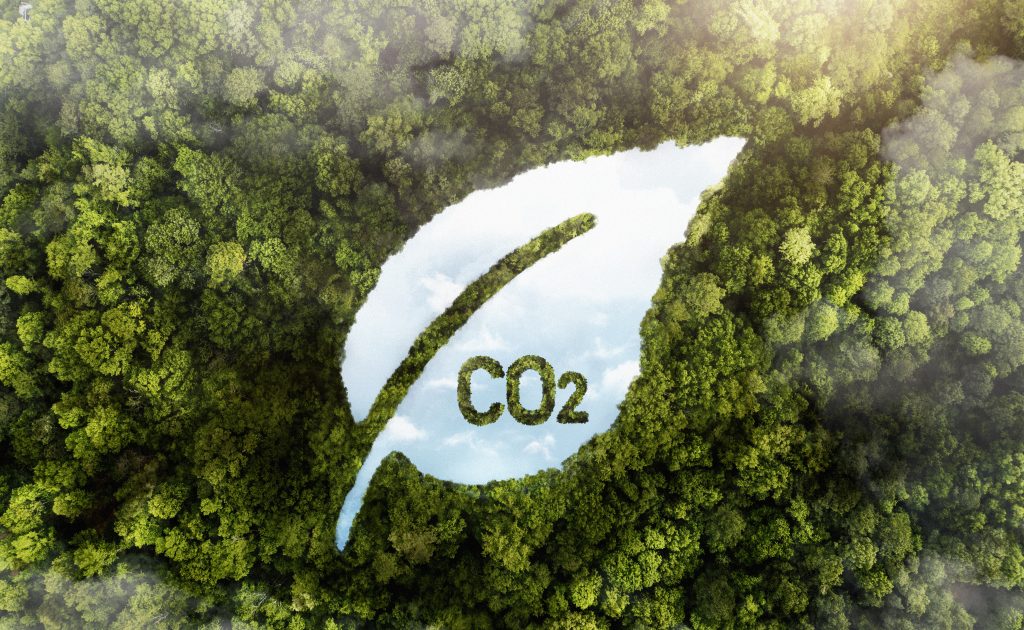
Over the past few years, a growing number of companies have adopted net-zero targets as part of their efforts to address climate change.
These targets involve companies committing to reducing greenhouse gas (GHG) emissions through initiatives such as process adjustments, product reformulation, fuel transition, embracing renewable energy, investing in carbon removal projects, and a pledge to offset any remaining emissions by obtaining carbon offsets, commonly known as carbon credits.
What is carbon credit, carbon offset?
Fundamentally, carbon credits or carbon offsets, are generated from the avoidance, reduction, or removal of one tonne of carbon dioxide equivalent (tCO2e) from the atmosphere.
They can be used to compensate emissions of greenhouse gases (GHG) of which high concentrations in our atmosphere leads to global warming and climate change. Examples of GHG include carbon dioxide, methane, nitrous oxide, and hydrofluorocarbons (HFC).
Carbon credits or offsets use carbon dioxide as a reference point as it is the most abundant GHG in the atmosphere.
What is the difference between carbon credits and carbon offsets?
There are two primary sectors in the carbon market: compliance carbon market and voluntary carbon market (VCM). Carbon credits are more commonly traded in the compliance carbon market whereas carbon offsets are more commonly used in the voluntary carbon market.
The compliance market adheres to regulations set by national or international carbon reduction frameworks. In the compliance market, companies in the energy intensive or highly polluting industry (e.g. power generation, cement, steel, fertilizers) are mandated to keep within their carbon allowances, otherwise known as emission limits.
The amount of carbon allowances is predetermined in a carbon reduction framework; it cannot be increased or removed. Companies in the compliance market that manage to stay below their carbon allowance have the option to sell their carbon credits.
Other companies can purchase carbon credits to compensate for GHG emissions that surpass their carbon allowance to avoid being taxed on the excess. This creates a dual incentive for companies: they face financial consequences for exceeding emission limits, and conversely, they stand to profit by curbing emissions and selling carbon credits.
VCM provides a platform for businesses, non-governmental organizations (NGOs) or individuals seeking to reduce their carbon footprint to purchase carbon offsets. Participants of the VCM are not (yet) legally required to reduce their emissions and do so proactively to demonstrate a commitment to sustainability.
From here forth, carbon credits or carbon offsets will be collectively referred to as carbon credits.
How do carbon credits work?
Carbon credits originate from transformative projects aimed at offsetting GHG emissions. These projects fall into two primary categories: nature-based and technology-based. Nature-based initiatives, such as reforestation and wetland rejuvenation, work harmoniously with the environment to naturally sequester carbon.
Meanwhile, technology-based solutions involve innovative technologies that enhance efficiencies or decrease emissions, such as renewable energy projects and direct carbon capture technologies.
To uphold the authenticity of carbon credits, these projects are required to undergo thorough verification and certification processes by reputable and recognized standards before the carbon credits can be issued.
When a carbon credit has been used to compensate emissions in another location, it undergoes a process known as “retirement.” The issuing standard will then remove this carbon credit from circulation, ending its trading cycle and preventing instances of double accounting.

Who verifies carbon credits?
Accredited organizations have the exclusive authority to certify carbon credits, while independent verification bodies play a crucial role in ensuring that carbon reduction projects adhere to the rigorous offsetting rules established by these standards.
Here, we would like to introduce two globally recognized organizations.
Verra stands as the most widely embraced carbon credit certification program, enabling certified offset projects to convert their emission reductions or removals into carbon credits.
Verra boasts over 1,800 certified Verified Carbon Standard (VCS) projects, collectively contributing to a reduction or removal of over 920 million tons of greenhouse gas (GHG) emissions.
The VCS program concentrates solely on GHG reduction attributes and does not mandate additional environmental or social benefits for projects.
Different from Verra standard, The Gold Standard is a voluntary carbon credit certification initiative that stands out by placing the UN Sustainable Development Goals (SDGs) at the core of its certification process, unlike Verra.
Developed through collaboration like the World Wildlife Fund (WWF), this crediting program emphasizes projects that deliver enduring social, economic, and environmental benefits.
Benefits of carbon credits
As businesses and various organizations define their mission statements, there’s a growing trend of incorporating sustainability goals.
This not only results in the emergence of additional opportunities, such as the creation of more jobs, sustainable projects, biodiversity conservation, improved health, and more, but it also extends to economic opportunities and market incentives through carbon credits.
These incentives contribute to the development of additional projects and activities aimed at mitigating carbon emissions.
Moreover, the sale of carbon credits presents a financial avenue for businesses or entire governments to invest in technologies and systems that facilitate the adoption of more sustainable practices, creating a mutually beneficial scenario.
Saxon Renewables
Saxon Renewables offers a diverse selection of carbon credits tailored to your requirements, encompassing nature and technology-based projects from various vintages and registries. Each carbon credit you acquire and retire signifies the removal of 1 tonne of CO₂e emissions.
For many corporate buyers, especially in Malaysia, the procurement of carbon credits is a relatively new undertaking. Saxon Renewables is committed to providing assistance throughout your carbon credits procurement journey, from strategy development to execution.
Numerous pathways are available to help you fulfill your carbon offset objectives, and Saxon Renewables stands as your trustworthy sustainability partner for all your needs.
Don't hesitate to reach out to us for further information and guidance on your sustainability journey.









